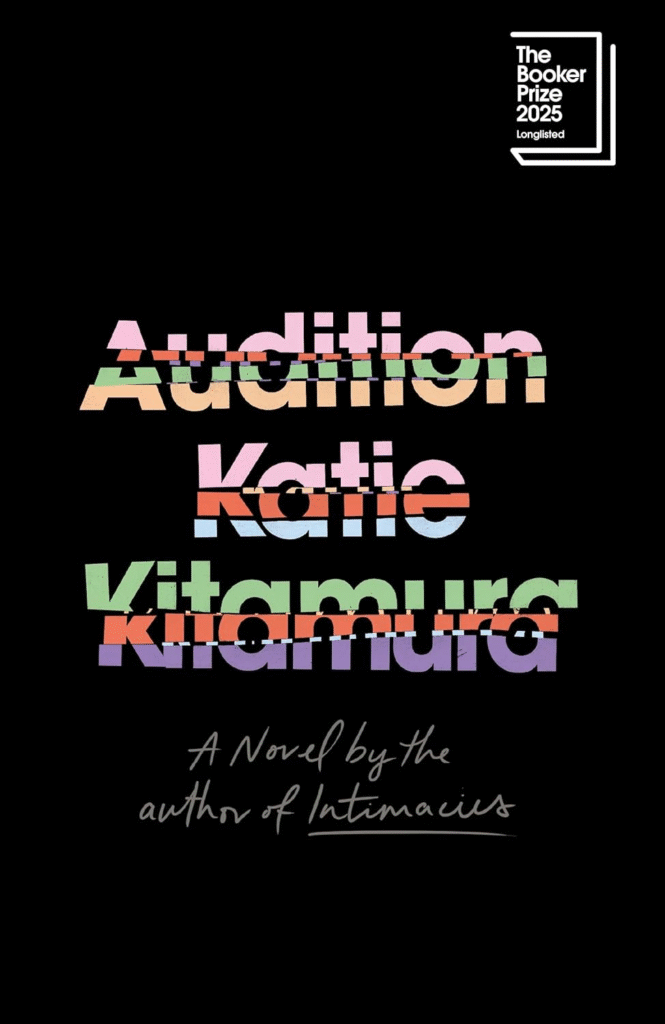Father Tongue, Motherland: The Birth of Languages in South Asia by Peggy Mohan, published in January 2025, is a deeply researched book that explores how languages in South Asia have evolved over thousands of years. The author explains how migrant men brought their languages to new regions, where they mixed with local languages spoken by women. This mix created what the author calls “father tongues”, languages that carry outside words but still follow the grammar of the original local language. Father Tongue, Motherland uncovers how our speech today still holds the deep memory of the past.
In Father Tongue, Motherland, Mohan studies examples like Dakkhini in the Deccan, where northern and southern cultures met. She also tries to trace the hidden language of the Indus Valley by examining how ancient patterns still exist in today’s languages. The book explores other migrations too, such as the movement of people beyond the Ganga-Yamuna region and into Nepal, where new hybrid languages formed. Father Tongue, Motherland connects these changes to bigger questions about identity, culture, and the power of communication.
Father Tongue, Motherland is perfect for anyone curious about how languages grow, mix, and survive. Peggy Mohan writes in a clear and engaging way, making difficult ideas easy to understand. This book helps readers see how the past still shapes the words we use today.
Read Also: The Plague Upon Us Book Review by Shabir Ahmad

Book Details and Where to Buy
Father Tongue, Motherland: The Birth of Languages in South Asia by Peggy Mohan was published on January 30, 2025, by Hamish Hamilton (Penguin India). Written in English, the book is about how South Asian languages developed when migrant men mixed with local communities, especially women. These interactions led to new languages that used the vocabulary of the migrants (the “father tongue”) but kept the grammar of the local language (the “motherland”). The book is 373 pages long and gives a deep yet easy-to-understand explanation of how languages in India and nearby regions evolved over time.
Readers can buy Father Tongue, Motherland in different formats. The Kindle edition is priced at ₹240 and is available on Amazon India. The hardcover edition is also available on multiple platforms: ₹427 on Amazon, ₹559 on Midland Book Shop (with a 20% discount), ₹489 on Bookswagon (30% off), and ₹524 on MyPustak with free delivery. These options make it easy for readers to choose how and where they want to read the book.
Read Also: The Undying Light: India’s Story by G.K. Gandhi
About the Author of Father Tongue, Motherland
Peggy Mohan is a linguist, educator, and author renowned for her insightful works on the evolution of languages in South Asia. Born in Trinidad, West Indies, she pursued her undergraduate studies in linguistics at the University of the West Indies and earned a PhD in linguistics from the University of Michigan. Throughout her academic career, she has taught linguistics at esteemed institutions such as Howard University in Washington D.C., Jawaharlal Nehru University, and Ashoka University, as well as mass communication at Jamia Millia Islamia in New Delhi.
Beyond academia, Mohan has explored various creative avenues, including cartoon animation, producing a Hindi television series for children, and teaching music. She is the author of several novels and notable non-fiction works, including Wanderers, Kings, Merchants (2021), which received the Mathrubhumi Book of the Year Award. Her recent publication, Father Tongue, Motherland (2025), continues her exploration into the intricate tapestry of South Asian languages, examining how historical migrations and cultural interactions have shaped linguistic development in the region.
Read Also: The Last Knot by Shabir Ahmad Mir – Book Review
Central Themes from Father Tongue, Motherland
- The Concept of ‘Father Tongue’: In Father Tongue, Motherland, Peggy Mohan introduces the idea of the “father tongue,” suggesting that when migrant men settled in new regions, they contributed vocabulary to the local language, while the native women preserved the original grammar. This blend resulted in new languages that carried the structure of the motherland’s tongue but incorporated new words from the migrants’ language.
- Grammar as the Core of Language Evolution: Mohan emphasizes that while vocabulary can change rapidly, grammar remains stable over time. She likens grammar to bones that persist long after the flesh (vocabulary) has decayed. By analyzing grammatical structures, she attempts to reconstruct aspects of ancient languages, such as those of the Indus Valley Civilization.
- Reevaluating Prakrits and Pidgins in South Asia: The book challenges traditional views by questioning why South Asian linguistic history emphasizes Prakrits over pidgins. Mohan suggests that Prakrits were not merely simplified versions of Sanskrit but were influenced by local languages and served as administrative languages rather than colloquial speech.
- Uncovering the Language of the Indus Valley Civilization: In Father Tongue, Motherland, Mohan delves into the mysterious language of the Indus Valley Civilization. She examines linguistic remnants in modern South Asian languages to hypothesize about the features of this ancient tongue, despite the lack of decipherable written records.
- Case Studies: Dakkhini, Magadhan, and Nepali Languages: The book presents detailed studies of languages like Dakkhini, Magadhan, and Nepali to illustrate its themes. For instance, Dakkhini showcases a blend of northern and southern linguistic elements, reflecting historical migrations and cultural interactions. Similarly, the evolution of Nepali demonstrates how languages can develop through the integration of diverse linguistic influences.
- Language as a Reflection of Social and Political Dynamics: Mohan emphasizes that language evolution is deeply intertwined with social and political contexts. She discusses how power dynamics, colonization, and societal structures influence language development, leading to the adoption or abandonment of certain linguistic features.
- Language as a Reflection of Social Hierarchies: In Father Tongue, Motherland, Peggy Mohan examines how language evolution mirrors societal structures and hierarchies. She discusses how certain languages gain prestige and become dominant due to their association with ruling classes or administrative functions, while others are marginalized. This theme highlights the interplay between language and power dynamics in South Asian history.
- Linguistic Traces of Ancient Civilizations: Mohan delves into the remnants of ancient languages within modern South Asian tongues. In Father Tongue, Motherland, she explores how features of the Indus Valley Civilization’s language may persist in contemporary languages, despite the original language being lost. This theme underscores the enduring legacy of ancient civilizations in present-day linguistic patterns.
- Impact of Globalization on Language Diversity: The book addresses concerns about the homogenizing effects of globalization on linguistic diversity. In Father Tongue, Motherland, Mohan discusses how the spread of dominant global languages can lead to the erosion of local languages and dialects, emphasizing the importance of preserving linguistic diversity in an interconnected world.
- Cognitive Aspects of Language Acquisition: Mohan explores how individuals acquire and process multiple languages, particularly in multilingual societies. In Father Tongue, Motherland, she examines the cognitive mechanisms that enable people to find and switch between languages, shedding light on the mental flexibility required in linguistically diverse environments.
- Challenges in Linguistic Research: The book also touches upon the methodological difficulties faced in linguistic research, especially when reconstructing ancient languages or studying undocumented dialects. In Father Tongue, Motherland, Mohan discusses the limitations of available data and the complexities involved in tracing language evolution over millennia.
These themes in Father Tongue, Motherland provide a comprehensive understanding of the intricate relationship between language, society, and history in South Asia. Peggy Mohan’s work offers valuable insights into how languages evolve, interact, and influence each other across time and cultures.
Read Also: Tareekh Pe Justice Review: Reforms for District Courts
Expert Reviews on Father Tongue, Motherland
“Never before have I read such an insightful and comprehensive historical account of Indian languages as Peggy Mohan’s, lighting up the subterranean pathways of language continuities over vast time spans. It offers an entirely original and thoughtful re-reading of India’s cultural and linguistic past.”
— Ganesh Devy, Chief Editor, The People’s Linguistic Survey of India
“As expected, this book is both serious and entertaining, appealing to academics as well as laymen readers like me. ‘Father Tongue’ is quite appropriate as a title and should tickle the curiosity of readers.”
— Sumanta Banerjee, eminent journalist and writer
Why You Should Read & Buy this Book
Understand How Indian Languages Were Born: Father Tongue, Motherland explains in a simple way how many of the Indian languages we speak today came into existence. It shows how new languages formed when migrants and locals mixed, keeping the grammar of the local people and adding words from outside languages.
Explore Hidden History Through Language: Father Tongue, Motherland helps you look at history through the lens of language. You will learn how the way we speak today holds clues from thousands of years ago, from the Indus Valley to the Deccan and beyond.
Learn Complex Ideas Easily: Even though the book discusses deep topics like creoles, grammar, and migrations, Father Tongue, Motherland is written in a way that regular readers can follow. You do not have to be a linguist to enjoy or understand it.
Discover New Ways to Think About Language: Father Tongue, Motherland gives a new point of view about Indian languages not just by listing facts, but by telling stories of how people and languages changed over time. It is full of fresh insights and surprising facts.
Great for Curious Minds: If you are curious about how languages grow, mix, and carry history, Father Tongue, Motherland is perfect. It connects language with real life, migration, power, and identity in a very engaging way. Compared to her earlier work Wanderers, Kings, Merchants, this book is more focused and structured.
Read Also: The Lost Heer Review: Women in Colonial Punjab
Final Thoughts
Father Tongue, Motherland by Peggy Mohan has been widely praised for its fresh and bold explanation of how Indian languages evolved. Readers and critics appreciate the book’s central idea that modern South Asian languages were formed when migrant men’s vocabulary mixed with the grammar of local women, creating new “mixed” languages. The book combines deep linguistic research with historical and cultural insights, making it both educational and eye-opening. Languages like Dakkhini and Newari are used as examples to trace these patterns, and many found the arguments thought-provoking and original.
Through examples from different regions like the Deccan, Nepal, and eastern India, she shows how ancient people adapted to new languages in clever ways. She also tries to guess what the lost language of the Indus Valley might have looked like based on the languages we speak today.
While the book discusses complex topics like ergativity and creoles, most reviewers felt Peggy Mohan made them understandable for non-experts. However, some readers noted that a basic knowledge of linguistics helps in fully grasping the ideas. Overall, Father Tongue, Motherland is considered an important and engaging read for anyone interested in the roots of Indian languages and identity.
Read Also: Voice for the Voiceless by Dalai Lama Memoir




